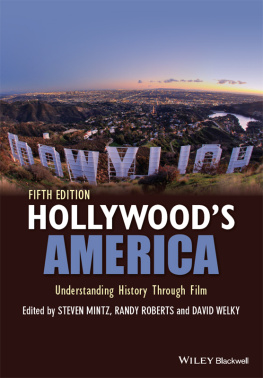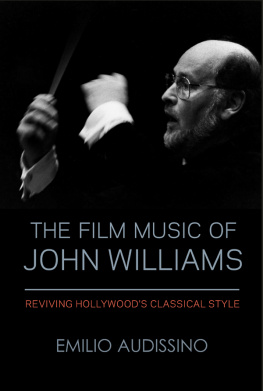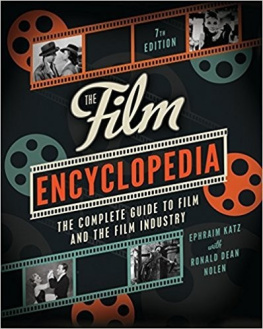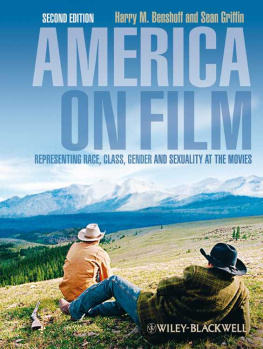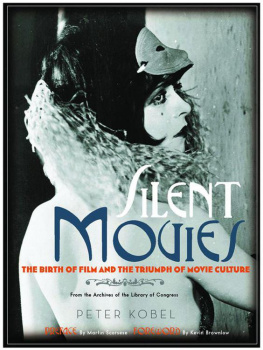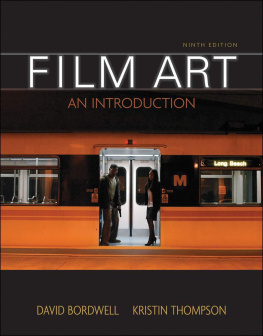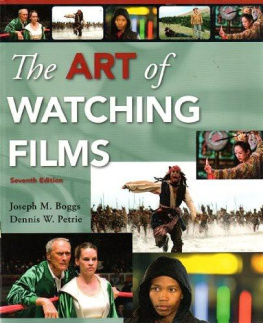

My Little Chickadee (1940). Universal Studios. Directed by Edward F. Cline. Courtesy of Jerry Murbach, www.doctormacro.info.
This fifth edition first published 2016
2016 John Wiley & Sons, Inc
Edition History: Brandywine Press (1e, 1994; 2e, 1997; 3e, 2001); Blackwell Publishing Ltd (4e, 2001)
Registered Office
John Wiley & Sons Ltd, The Atrium, Southern Gate, Chichester, West Sussex, PO19 8SQ, UK
Editorial Offices
350 Main Street, Malden, MA 02148-5020, USA
9600 Garsington Road, Oxford, OX4 2DQ, UK
The Atrium, Southern Gate, Chichester, West Sussex, PO19 8SQ, UK
For details of our global editorial offices, for customer services, and for information about how to apply for permission to reuse the copyright material in this book please see our website at www.wiley.com/wiley-blackwell.
The right of Steven Mintz, Randy Roberts, and David Welky to be identified as the authors of the editorial material in this work has been asserted in accordance with the UK Copyright, Designs and Patents Act 1988.
All rights reserved. No part of this publication may be reproduced, stored in a retrieval system, or transmitted, in any form or by any means, electronic, mechanical, photocopying, recording or otherwise, except as permitted by the UK Copyright, Designs and Patents Act 1988, without the prior permission of the publisher.
Wiley also publishes its books in a variety of electronic formats. Some content that appears in print may not be available in electronic books.
Designations used by companies to distinguish their products are often claimed as trademarks. All brand names and product names used in this book are trade names, service marks, trademarks or registered trademarks of their respective owners. The publisher is not associated with any product or vendor mentioned in this book.
Limit of Liability/Disclaimer of Warranty: While the publisher and authors have used their best efforts in preparing this book, they make no representations or warranties with respect to the accuracy or completeness of the contents of this book and specifically disclaim any implied warranties of merchantability or fitness for a particular purpose. It is sold on the understanding that the publisher is not engaged in rendering professional services and neither the publisher nor the author shall be liable for damages arising herefrom. If professional advice or other expert assistance is required, the services of a competent professional should be sought.
Library of Congress Cataloging-in-Publication Data applied for.
9781118976494 (paperback)
A catalogue record for this book is available from the British Library.
Cover image: Dreamstime Namolik
Preface
Anyone who wishes to know about the United States would do well to go to the movies. Films represent much more than mere mass entertainment. Movies even bad movies are important sociological and cultural documents. Like any popular commercial art form, movies are highly sensitive barometers that both reflect and influence public attitudes. Since the beginning of twentieth century, films have recorded and even shaped American values, beliefs, and behavior.
Hollywood's America has two fundamental goals. The first is to use feature films to examine the central themes of twentieth- and twenty-first-century American culture. The book begins with a concise introduction that presents the history of American film against a backdrop of broader changes in popular culture since the late nineteenth century. It is then followed by a series of interpretive essays that examine how specific films, film genres, and developments within the film industry illuminate important aspects of American political, economic, and social life. These interpretive essays are supplemented with primary sources that offer first-hand looks at the movies' connection with the larger world. It concludes with an up-to-date bibliography of American film history.
As we shall see, the history of the movies is inextricably intertwined with broader themes and issues in American cultural history, such as the transition from Victorian culture, with its emphasis on refinement, self-control, and moralism, to modern mass culture. Popular films offer a valuable vehicle for examining public responses to the social disorder and dislocations of the Depression, the fears of domestic subversion of the late 1940s and early 1950s, the cultural and moral upheavals of the 1960s, the meaning and significance of the Vietnam War, and the growing multiculturalism within the United States. Through their plots, their characters, and their dramatization of ethical issues, movies have captured the changing nature of American culture.
The book's second aim is to help students develop tools for reading and interpreting visual texts. In a society in which visual images have become a dominant mode of entertainment and persuasion, used to promote both products and politicians, the ability to analyze visual texts may be as important as a facility with the written word.
Motion pictures contain a distinct set of rules and grammar that demands the same critical thinking and analytical skills one uses to read written texts. To analyze a poem, one must understand patterns of rhyme and rhythm and a poet's use of sound and imagery. Likewise, to interpret a film, one must understand how filmmakers use camerawork, editing devices, lighting, set design, and narrative to construct their text.
The films examined in this book are feature films not documentaries or avant-garde or underground films. These are the classic movies that made Americans laugh and weep, shriek with terror, and tremble with excitement. They offered wit, suspense, romance, thrills, highlife, and lowlife. Highbrow critics might dismiss most Hollywood films as schlock, but these movies gave audiences more pleasure than any other art form and taught truly fundamental lessons dealing with intimacy, tenderness, initiation, lust, conflict, guilt, and loyalty. It was from the silver screen that Americans received their most intensive if highly distorted picture of their country's past, the lifestyles of the rich and famous, and the underside of American life.
For more than one hundred years, films have been the most influential instrument of mass culture in the United States. As America's dream factory, which manufactures fantasies and cultural myths much as a Detroit automaker produces cars, Hollywood has shaped the very way that Americans look at the world. Hollywood's films have played a pivotal role in modernizing American values. They have been instrumental in shaping Americans' deepest presuppositions about masculinity, femininity, race, ethnicity, and sexuality. Movies have helped form Americans' self-image, and have provided unifying symbols in a society fragmented along lines of race, class, ethnicity, region, and gender. In certain respects subversive of traditional cultural values, movie culture created a mythic fantasy world that has helped Americans adapt to an ever-changing society.
Introduction
The Social and Cultural History of American Film
One night a year America shuts down. All across the United States tens of millions of people press the buttons on their remote controls, sit back in their easy chairs, monitor their Twitter feeds, and become the world's largest congregation, watching a key event in the country's civic religion the Oscars. Even though movie attendance has fallen steeply to just one-third of what it was at the time of the first Academy Awards ceremony in 1927 Americans still gawk at the limousines as they pull up to the Dolby Theater in Los Angeles, gaze at the stars' tuxedoes and gowns, and wait impatiently for a memorable moment a naked streaker racing across the stage or a controversial acceptance speech.
Next page
